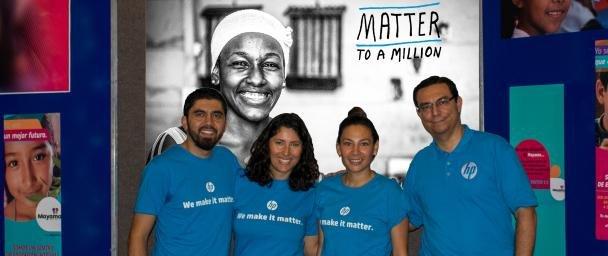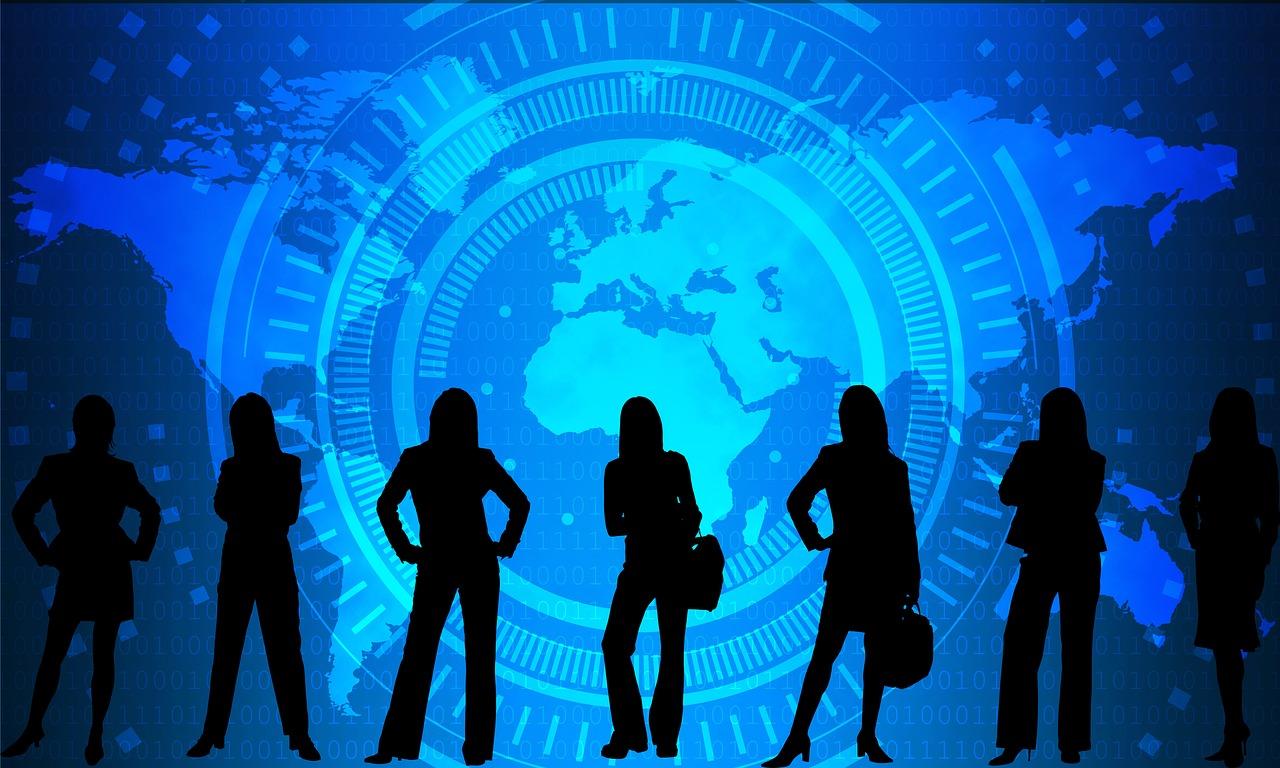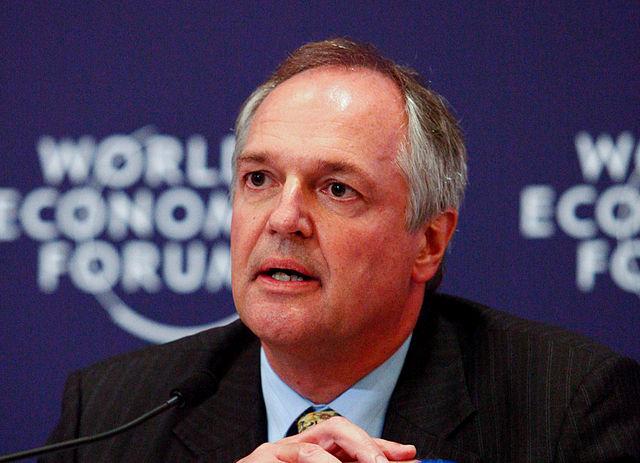How I Became Passionate About the Circular Economy


In the U.S., 81 percent of Generation Z say they’re looking for purpose in their work, according to a recent report from American Express. Many are finding that purpose in the corporate responsibility and sustainability fields. As this next generation enters the workforce, we wanted to find out what draws them to careers in this space, so we are publishing a series of personal essays from young professionals, whether they are millennials or Gen Z, to learn about what their new corporate responsibility or sustainability careers mean for them.
I began my academic career at Nassau Community College on Long Island, New York, studying liberal arts and advanced mathematics. I then transferred to CUNY Baruch College with the intention of becoming an actuary, but ended up obtaining my bachelor’s in public policy with a focus on New York City’s government. I held internships with the NYC Council as well as the U.S. Senate, where I had the opportunity to work on constituent affairs and legislative research.
My first professional job was at a boutique government relations consulting firm with a wide breadth of clients seeking strategies to navigate through NYC government. There I worked as a scheduler and office manager, liaising between clients and public offices, and enjoyed the relationship management aspect of job. My next role was with another government relations consulting firm that focused on security and public safety. In this role I provided clients and management with policy research, analysis of current events and assistance cultivating long-term strategic partnerships.
Most recently, I worked in the membership department at a trade association that represents the financial industry. The commonality between these jobs was client relationship management and the intersection of the public and private sectors. Although I enjoyed the high-level themes of my work, I was seeking to make an impact and support organizations that proactively design sustainability into their operations.
On a personal note, Earth Day is my birthday, I practice yoga, I try to minimize my consumption, dispose of items responsibly and I find myself concerned with the unnoticed effects everyday lifestyle choices. I wanted my work to reflect my values. In an effort to understand sustainability issues better – and gain some credentials in this field – I decided to leave my Wall Street job when I was admitted to graduate school.
Recently, I obtained my master of science in environmental management and sustainability from both James Madison University and the University of Malta. This dual degree took place in Malta and emphasized cross-cultural project management, system dynamics and integrated technologies for management.
Graduate school completely changed the way I think about sustainability issues, and equipped me with a toolkit for analyzing environmental management challenges and implementing holistic solutions. Malta is a country that struggles with water scarcity, and also has had to take on several water pollution challenges.
Upon reflecting on my time in Malta, my takeaway definition of sustainability is “seeking to balance environmental, social, and economic issues within a cultural context.”
Throughout our coursework we examined various case studies about sustainability, including the fashion industry’s impact, which ranges from social and economic issues to environmental devastation. It’s clear the apparel and textile industry is particularly unsustainable in terms of its waste and freshwater use. The culmination of my graduate work – my thesis, which is published here – is a qualitative analysis of traceability technology (as in blockchain) integrated in textile supply chain management to enhance sustainability by mitigating risks and capitalizing on circular economy opportunities.
My aspiration is to address waste diversion issues in a meaningful way. The circular economy offers one solution to waste management challenges, which are intrinsically linked to other sustainability issues such as water scarcity and social justice.
What I’d love to see included in this conversation is the fact that everyone can win with circular economy solutions. This does not need to be a zero-sum game. Who pays for landfills? Who pays for environmental remediation when there’s an emergency? Taxpayers.
Who needs clean freshwater? Everyone.
Waste is a huge and very unsexy issue. I want to harness my experience in the overlap of the public and private spheres and client relationship management and integrate it with my recent academic investigations. Ultimately, education (what to do with “waste”?) and consumer behavior change (consume less, dispose responsibly) is critical to whatever system we adopt. Now, I’m seeking to develop and support business cases for circular systems with an emphasis on proactive design choices that consider requirements for all stakeholders.
Image credit: Ricardo Bernardo/Flickr
Powering Down Coal Worldwide Isn’t Occurring Fast Enough


To meet the temperature goal set out in the 2015 Paris Agreement – to keep global warming below 3.6 degrees Fahrenheit – one coal unit will need to close every day, or 100 GW every year, until 2040. Given that only 30 GW have been retired annually from 2010 to 2018, we’ve got a long way to go, estimates the Carbon Tracker Initiative, a London-based, non-profit financial think tank.
This week they’ve published a new study to coincide with COP24, the United Nations' annual climate change conference, that presents the business case on how we may bridge that gap – stop investing in coal and begin to retire unprofitable coal capacity worldwide.
Besides helping us reach the Paris Agreement targets, curtailing plans to build new coal plants and phasing out existing ones just makes good business sense. That’s because two-fifths (42 percent) of coal-fired plants globally are already unprofitable because of high fuel costs, according to Carbon Tracker estimates.
By 2030, 56 percent of coal plants could be operating at a loss, and by 2040 that number could reach 72 percent. (Profitability is measured by revenues minus long-run operating costs.)
The cost of coal is being driven up by existing carbon pricing and air quality regulations, while at the same time, prices for natural gas and renewables, like onshore wind and solar power, continue to decline. This trend is likely to continue and will accelerate if governments worldwide impose additional environmental regulations.
Continuing to operate coal plants will present problems in both regulated and unregulated (competitive) markets, according to Carbon Tracker. In markets where power generators are subject to competition, the report warns that “utilities and their shareholders are exposed to stranded asset risk.”
A stranded asset in this context refers to a coal plant that “at some time prior to the end of its economic life is no longer able to earn an economic return.” This moves the asset on the company’s balance sheet to the liability column.
It may sound like an arcane financial term, but as the world transitions to a low-carbon economy, expect to hear it more often as more fossil fuel and power companies try to figure out how to cope with these stranded assets while protecting shareholder value.
The picture isn’t much better in regulated markets, where government regulators approve and pass on the cost of generation to consumers. In these markets, the report suggests, “backing coal in the long-term will threaten economic competitiveness and public finances, because politicians will be forced to choose between subsidizing coal power or increasing power prices for consumers.”
The environmental and financial risks, and rewards, vary by country. China, for example, is the world’s largest power producer, representing one-third of global power generation. Some 66 percent of that power came from coal-fired plants last year.
China has the biggest exposure to stranded asset risk ($389 billion) but could avoid these losses by phasing out coal in line with the Paris Agreement targets. This is because a significant portion of China’s plants are unprofitable today, and this trend will only continue over time, estimates Carbon Tracker. And in fact, in some regions, new renewables are already cheaper to build than operating existing coal plants.
The Carbon Tracker Initiative will be hosting an event at COP24 to discuss the findings from their report, which they say represents the first time that coal generation has been studied globally at an asset level.
The analysis is certainly thorough, covering 6,685 coal operating units worldwide. This represents about 95 percent (1,900 GW) of the global operating capacity and about 90 percent (220 GW) of capacity under construction.
The report is available for download at Carbon Tracker’s coal power economics portal, a new online tool that tracks the economic and financial risks of coal power at the asset-level worldwide. They have made this information freely available to help investors, policymakers and NGOs “develop economically rational plans to close coal plants and to understand the financial risk if they continue to operate.” Hopefully, these decision makers will take heed if we are to meet the ambitious goals set out three years ago in Paris.
Image credit: V.T. Polywoda/Flickr
Maersk Pushes the Net Zero Carbon Emissions Envelope


The global shipping company A.P. Moller - Maersk has joined the growing list of top corporations pledging either 100 percent renewable energy or net zero carbon emissions. That's a fairly straightforward task for some companies, but it in the global transportation sector the obstacles seem insurmountable. After all, carbon is the lifeblood of shipping and logistics.
Nevertheless, Maersk is setting its sights on net zero carbon emissions by 2050. That's a long way off, but if the company can produce some quick results out of the gate, it could push the entire industry in a more sustainable direction.
Maersk makes the net zero carbon emissions pledge
Renewable energy and net zero are two complementary but distinct goals. For example, a net zero pledge can simply mean that a company is using offsets to counterbalance its carbon emissions, rather than making operational changes that shrink its carbon footprint.
With that in mind, let's take a closer look at the new net zero announcement.
Maersk is actually looking at a much more ambitious goal than offsets. The company's net zero goal involves something that doesn't exist yet: commercially viable, carbon neutral shipping vessels.
In order for Maersk to achieve its 2050 goal, those vessels have to materialize by 2030. That's because cargo ships generally have a lifespan of 20-25 years. Vessels made during or after 2030 will still be around by 2050. If they are still being built to run on fossil fuels it will be that much harder to reach net zero.
In other words, Maersk is calling for industrywide collaboration on new cutting edge technology, not merely efficiency tweaks on fossil fuel technology.
The company has already invested $1 billion in energy efficiency improvements over the past four years alone, but that is not enough. As explained in a December 4 press release, Maersk is seeking a wholesale movement away from fossil fuels:
As world trade and thereby shipping volumes will continue to grow, efficiency improvements on the current fossil based technology can only keep shipping emissions at current levels but not reduce them significantly or eliminate them.
That seems to leave some wiggle room for on-board carbon capture, but Maersk seems to be focusing its attention on non-fossil fuel sources. Company Chief Operating Officer Søren Toft elaborates:
The only possible way to achieve the so-much-needed decarbonisation in our industry is by fully transforming to new carbon neutral fuels and supply chains.
What about scrubbers and LNG?
There is an interesting backstory to Maersk's insistence on a non-fossil solution. The global shipping industry is facing a new cap on sulfur emissions by 2020. To meet the new standard, some shippers have already invested in scrubbers. Liquid natural gas and other compliant fuels are the two other options.
By insisting on carbon neutral fuels -- and supply chains -- Maersk is essentially saying that an emissions cap doesn't tackle the global warming problem at its source. The company is looking far into the 21st century for permanent solutions. If it can enlist more companies in that endeavor, economies of scale kick in and costs go down.
That's a tall order for the shipping community. Although electric drive is edging into the market for small seacraft, Maersk does not foresee loading battery packs onto its colossal ships. As the company points out, electric trucks have only just barely edged into the logistics market, and they handle loads that are only up to the size of a standard shipping container. Maersk's gigantic cargo ships carry thousands of shipping containers and travel thousands of miles without refueling.
So, what's left? Biofuel is one avenue, though growing fuel crops at scale is a challenge considering the increasing risks and impacts of climate change on arable land. One alternative is to grow marine fuel crops like algae and seaweed. Maersk has already paired with the U.S. Navy on algae biofuel and it could be considering a focus in that direction.
Maersk has also been experimenting with wind power among other alternatives.
Renewable hydrogen could also be on the table. Hydrogen -- produced by "splitting" water with renewable energy -- is already beginning to challenge battery technology in the trucking industry and rail transportation, though its application to larger ships is still untested.
Making carbon neutral ships out of thin air
Though the 2050 goal is challenging, Maersk has a good shot at reaching it. After all, Maersk is the world's largest shipping company. It serves 343 ports in 121 countries and moves 12 million containers every year, so it has the weight to move markets.
Maersk already has its own fleet of more than 50 engineers working on efficiency improvements, partly in response to air quality initiatives at the Port of Los Angeles and elsewhere. If all goes according to plan, 2019 will see that in-house effort expand into an industrywide collaboration:
Research & Development is key to take the industry away from today’s fossil based technology and by setting this ambitious target, Maersk hopes to generate a pull towards researchers, technology developers, investors, cargo owners and legislators that will activate strong industry involvement, co-development, and sponsorship of sustainable solutions that we are yet to see in the maritime industry.
As for leading the industry's march toward net zero, Maersk already has established itself in the pole position. According to the company, over the past 11 years the shipping industry has reduced its carbon emissions by about 37 percent compared to a 2007 baseline. Maersk has beat that average, currently weighing in with a 46 percent reduction.
Photo: via A.P. Moller - Maersk.
COP24: A Chance For Companies to Act on Climate


What do we do about our changing climate? That’s the question world leaders will be focused on as the 24th Conference of the Parties to the United Nations Framework Convention on Climate Change, otherwise known as COP24, kicks off this week in Katowice, Poland.
When events like this take place, it does truly feel as if the whole world is focused on addressing climate change. However, I have to remind myself that nearly 40 percent of Fortune 100 companies haven’t set even a single climate target.
I don’t want to sound like just another environmentalist waving my hands, jumping up and down that we need to act to reverse climate change NOW. The truth is simply this: I know it can be done, sustainability targets create business value and companies stand to lose big financially if they don’t act.
If your company falls in this bucket, listen up. I have helped Walmart, Starbucks and other household names get started with sustainability. I can help you too, using all the lessons I’ve learned from them.
Don’t take my word for it. Take it from the White House, which recently released a report showing a side of climate change that many people haven’t yet seen – the precise price tag of climate impacts to the U.S. economy. Projected climate impacts by the end of the century include $141 billion from heat-related deaths, $118 billion from sea level rise and $32 billion from infrastructure damage.
Think back to the recession of a decade ago. Remember the devastating impact on our economy (and possibly your business)? This will be double that.
What does this mean for the companies that haven’t set a climate target – or more broadly, any U.S. company? Supply chains will be disrupted here in the United States and overseas. Disasters will impact factory production, transportation will be disrupted, costs will increase and agricultural productivity will suffer. Almost no industry here in the U.S. will be able to escape the negative effects of climate change on their business.
Therefore, I have an offer for you: pick up the phone and call me. Let’s get started on your company’s sustainability journey. If you are feeling shy, but want some direction on the way forward with sustainability, here is some free advice: the three reasons for you to set a goal in 2019.
Reason #1: Savings
The first reason for you to set a goal in 2019 – money. A report from CDP– which holds the world’s largest collection of self-reported corporate environmental data, and other public sources – finds that nearly 80,000 emission-reducing projects by 190 Fortune 500 companies reporting data showed nearly $3.7 billion in savings in 2016 alone.
Reason #2: Your Family
The recent wild fires in California, that killed people and destroyed homes and businesses, caused toxic air up and down much of the state. We took a surreal picture from our rooftop apartment in San Francisco when the air quality was so unhealthy that I couldn’t let my kids play outside. I keep telling my children – ages 11 and 13 – that “this is not normal!” However, unfortunately, as Governor Jerry Brown recently said, “This is the new abnormal.”
According to Gallup, more than half of Americans think that climate change won’t affect them personally. If you fall in this category, please take it from me – the effects to my family are as real as they can get. You will be affected one way or another – maybe severe weather, maybe dramatically more expensive food, or maybe living through one of these traumatic events directly yourself.
Reason #3: Science
Which leads me to the third reason you should act on climate – science. The White House report comes just after another report from the Intergovernmental Panel on Climate Change (IPCC), which was written and edited by 91 scientists from 40 countries. The report shook me to my core and as the New York Times reports, it “describes a world of worsening food shortages and wildfires, and a mass die-off of coral reefs as soon as 2040 – a period well within the lifetime of much of the global population.”
The bottom line: We need to not only reduce emissions but start to actually pull emissions from the atmosphere. And we need to do it all now. This means cutting emissions from factories, implementing full energy efficiency in every sector, ramping up renewable energy, designing products to minimize greenhouse gases, protecting tropical forests, planting trees, and improving agriculture to increase soil carbon and reduce fertilizer pollution.
If you needed more reasons than savings, your family and science, how about supply chain risk reduction, new product innovation and employee and customer engagement? Whatever your reason, now is the time for you to act. While world leaders are focused on climate change this week at COP24, I challenge you to be the leader in your company focused on climate change.
Now that you have (hopefully) a reason for setting a sustainability goal in 2019, here’s my final piece of advice – how to do it:
- Start by evaluating your operations and supply chain before you set a goal in order to figure out your environmental impact and find the quickest wins and biggest opportunities to reduce that impact. Use tools like The Sustainability Consortiumor CDP, to report publicly. This will help you set audacious, public and science-based targets for greenhouse gas emissions.
- Collaborate for scale by working with others – including NGOs like EDF, companies and governments – in strategic and selective ways to create change beyond your boundary of control.
- Engage proactively on environmental policy to ensure long-term competitiveness, innovation and bottom-line efficiencies. We can’t get where we need to go without driving large-scale change and we cannot do that without policy.
- Accelerate environmental innovation. 21st century problems require 21st century solutions. Using technology, data analytics and visualization, companies and investors can make environmental problems visible and actionable – and even profitable.
Giving Smallholder Farms the Help They Need, with Fertilizer as Capital


Food insecurity is among India’s greatest development challenges. Though India has made rapid strides in improving its rates of undernourishment and malnutrition, it is still home to the highest number of hungry people in the world—194 million people (more than 15 percent of India’s population), according to the UN Food and Agriculture Organization (FAO)’s 2018 report, The State of Food Insecurity in the World, and shares a quarter of the global hunger burden.
On the 2018 Global Food Security Index published by The Economist Intelligence Unit, India ranked 76th among 113 countries.
Helping the poorest in India become more resilient
This problem is among the deepest concerns of the Sehgal Foundation, which designs and promotes rural development interventions that create opportunities, build resilience and provide solutions to some of the most pressing challenges in India’s poorest communities. In addition to agricultural development work, the foundation team helps rural communities create sustainable programs for managing water resources and strengthening rural governance—with particular emphasis on gender equality and women’s empowerment.
“The government of India has large food security and anti-poverty programs but there are critical gaps in terms of inclusion and exclusion,” says R. Jay Sehgal, executive vice president of the Sehgal Foundation. “Women and girls are affected the most with malnutrition.”
With support from donors and partners, the Sehgal Foundation focuses on helping rural communities create sustainable programs for managing water resources, increasing agricultural productivity, and strengthening rural governance. Sehgal Foundation’s grassroots programs address three of rural India’s most pressing and interrelated issues: Water security, food security, and social justice.
The Krishi Jyoti project: Moving farmers out of poverty
One of these strategic partners is The Mosaic Company Foundation and Mosaic India Pvt. Ltd., which has joined with Sehgal Foundation on the Krishi Jyoti (enlightened agriculture) project (or Mosaic Villages project), to help farmers in rural India move out of poverty and achieve greater food security. Launched in 2008, the project celebrated its ten-year anniversary in 2018.
The Krishi Jyoti project’s primary goal is to enhance farm productivity and empower farmers in the community currently living in poverty so they can lead more secure and prosperous lives.
The key mission is to help farmers, most of whom have only a small parcel of land, increase crop yields and improve their livelihoods. This work is done by introducing and promoting more effective farming practices such as the application of balanced fertilizer, the use of better quality seed, and the efficient use and conservation of water. Water augmentation structures are built in the villages and in the schools, where a healthier learning environment is possible with the provision of potable water and decent sanitary facilities. The project extends to the rehabilitation of dilapidated school buildings as well.
The program began in 2008 with two villages in Nuh and, by the end of 2017, it reached sixty villages and over 40,000 farmers in the semiarid villages of Nuh district, Haryana, and Alwar district, Rajasthan. Farmers participating in the project have seen yields increase by 20-30 percent, providing them with increased income. Check dams are capturing and storing rainwater to replenish the underground water table. And more children are receiving an education in a safe and healthy environment.
“For these farmers, agricultural productivity has increased with the use of better farming practices, improved efficiency in water use and, better water conservation techniques such as rainwater harvesting systems, check dams, farm bunding, etc., which effectively augment the groundwater,” says Sehgal.
Smallholder farmers face unique challenges
Globally, small farmers face hard constraints such as unfavorable climatic conditions, low rainfall, high temperatures, and poor soil quality. Smallholder farmers – those with less than 25 acres – work 90 percent of the world’s farms. Many of these farmers are food insecure, struggling to earn a living or feed their own families. In India, average yields are 50 to 70 percent lower than yields of top global producers.
“In such conditions, they cannot achieve viable livelihoods and improve resource efficiency even if they adopt new technology,” Sehgal explains. “In most agriculture-based economies, smallholder farms also face constraints such as access to inputs, technology, credit, and organized markets.”
Other challenges, he adds, include fragmented land holding, lack of correct information and timely extension services, lack of irrigation, lack of mechanization and increasing labor costs, decreasing soil quality, and inadequate storage facilities, transport, and marketing. In addition to these, the gender-disaggregated society makes smallholders vulnerable to market and climatic risks.
Although agriculture employs about 49 percent of the labor force in India, Sehgal points out, “one-third of the farmers in India do not like farming because it is not a profitable activity or viable occupation. Forty percent are willing to give up farming if they could find a better source of livelihood.”
Modern agriculture tools and products increase yields
Krishi Jyoti has helped close the yield gap with modern agricultural tools and products. According to the Sehgal Foundation, an evaluation study and farmer feedback revealed that overall rates for the adoption of micronutrients for pearl millet, mustard, cotton, and wheat have increased and are being sustained.
For onion and cotton, adoption rates were 100 percent and all the farmers covered during the survey were using recommended doses of crop nutrition. The assessment showed improved productivity for those farmers who adopted Krishi Jyoti practices as compared to those who had not. A comparison with control villages during the assessment survey showed a significant difference in productivity levels.
Further improvement in productivity is predicted with greater adoption of improved water management practices and technologies. The adoption of new farming practices is increasing productivity of lead crops. Yields in wheat, mustard, cotton, and millet have increased by 21-to-35 percent. A Krishi Jyoti water harvesting structure created the potential for 13 million gallons per year.
“This benefited 9,300 villagers and the renovation of twenty schools helped 4,000 schoolchildren to access good education,” Sehgal says.
Benefitting from sound advice
Agronomic expertise has proven invaluable for smallholder farmers participating in the project, Sehgal says. He points out that agricultural extension services (also known as agronomic services) play a crucial role in motivating farmers to adopt sustainable agricultural practices that lead to increased food security and improved rural livelihoods.
“Good agronomic advice builds farmers’ resilience to mitigate climate change impacts by expanding and improving locally relevant, cost-effective, and diverse agricultural practices with an effective utilization of technology and information,” he explains.
The teams from Sehgal Foundation and Mosaic, he says, “serve as a major source of motivation for boosting farmers’ participation.”
Farmers learn from the project technical guide along with training on and off the farm, and field demonstrations that help to make farming rewarding, Sehgal explains.
Farmers become change agents
There are ripple effects. Farmers who have adopted advanced agricultural practices serve as “change agents and motivate other farmers in neighboring villages,” he says. “The project team continues to provide farmers with new technology and information. “
This includes knowledge-sharing events such as field days and Kisan Sammelan (farmers’ fair) which provide opportunities for other farmers, especially those who are illiterate and women, who otherwise have difficulty accessing information on various aspects of agricultural development.
This is an essential part of the project, Sehgal adds, because “such groups are otherwise hesitant to accept any advice given by experts as they have experienced failures in the past.”
Given the success of the Villages Project, Mosaic announced in June that it will be extending its partnership with Sehgal Foundation through 2021.
Image: Still from "About Krishi Jyoti -- The Mosaic Villages Project in India" video.
IEA: Clean Energy Must Accelerate to Stop Climate Change


In case it has not been clear - the deployment of clean energy technologies must move at a far faster rate in order to prevent climate change.
That’s according to the World Energy Outlook, recently released by the International Energy Agency (IEA). The report – considered the gold standard for understanding global energy trends – is a behemoth, at 661 pages, with projections for various scenarios all the way to 2040. Unfortunately, all their projections lead the same conclusion – we’re not shifting away from fossil fuels fast enough. In fact, all current and under-construction energy infrastructure would already account for 95 percent of allowable emissions under the Paris Agreement.
“This means that if the world is serious about meeting its climate targets then, as of today, there needs to be a systematic preference for investment in sustainable energy technologies,” said Dr. Fatih Birol, IEA’s Executive Director, in a press statement.
The IEA’s report mimics the finding of the most recent Intergovernmental Panel on Climate Change (IPCC) report, released in October, which stated that we only have 12 years left to cut fossil fuel risks to avoid the worst of climate change. Most of the progress we’ve made is in electricity – where solar and wind power are growing rapidly and coal is facing a precipitous decline. But electricity only accounts for about a quarter of global greenhouse gas emissions, and it’s in the other big sectors – transportation, agriculture, buildings and industry – where progress has been lacking.
The problem is that IEA also highlights a few worrying trends – global emissions, after running flat for three years, ticked back up in 2017. Asia, not the U.S. and Europe, is also where attention needs to focus, as the world’s most populous continent was responsible for the vast majority of energy consumption, both from renewables and fossil fuels. The IEA also expects natural gas to overtake coal as the second most-used fossil fuel by 2030, and oil use to keep growing due to growth in planes, shipping and trucking.
So what can we do? One big thing would be to stop investing so much in fossil fuels. There are two avenues to this strategy – one is to ramp up the divestment movement, which seeks to reduce the amount investors put into fossil fuels. There is a role for both individuals and fund managers here. California recently took a major step in that direction when Governor Jerry Brown passed SB 964, a bill that requires two massive pension funds run by the state; the California Public Employees' Retirement System (CalPERS) and the California State Teachers' Retirement System (CalSTRS), to factor in climate-related financial risk and report progress both on that, and towards meeting the goals of the Paris Agreement.
"We have to bend the emissions curve back in a downward direction by 2020—if we're to have any chance of keeping global warming to 'significantly below 2 degrees Celsius,' as the Paris agreement requires,” said Janet Cox, executive director of Fossil Free California in response to the bill’s signing.
The second, and likely even more impactful shift, would be for government to reduce or eliminate fossil fuel subsidies. In the U.S. alone, we spend over $25 billion a year, with other developed nations like Germany, Japan and Italy not far behind, according to data from the Natural Resources Defense Council (NRDC). In total, G7 countries still subsidize fossil fuels at a total of over $100 billion a year, perpetuating their consumption.
“Our analysis shows that over 70 percent of global energy investments will be government-driven and as such the message is clear – the world’s energy destiny lies with government decisions,” said Birol.
While we should rightly praise the incredible growth in renewable energy, particularly in the electricity sector, it’s time to double-down and increase investment in renewables while reducing subsidies for fossil fuels.
Image credit: U.S. Department of Energy/Flickr
“Matter to a Million” Global Giving Partnership Celebrates Five Years, $21M in Loans


Imagine turning $25 loans into more than $21 million, impacting more than 1 million people globally, in just five years. No, this isn’t the latest Shark Tank pitch. It is the outcome of Hewlett Packard Company’s Matter to a Million employee-engagement program.
In 2013, Hewlett Packard Company partnered with Kiva, a nonprofit online platform dedicated to economic empowerment through loans, to answer a unique question: What if Hewlett Packard Company provided each of its 275,000-plus employees with a $25 Kiva credit? Employees could then log onto Kiva, view the thousands of global projects and lend the $25 to the borrower of their choice.
In 2015, Hewlett Packard Company divided into two separate companies: HP, Inc., which retained the personal and business computing and imaging products; and Hewlett Packard Enterprise (HPE), which provides products and services geared toward enterprises, including data center, networking and infrastructure solutions. Both companies continued offering employees the $25 Kiva credits each year, as by this point employees and leadership alike were extremely passionate about the program.
Karen Little, Kiva’s vice president, corporate engagement and partnerships, has worked with HP, Inc. and HPE on Matter to a Million since the beginning. During her phone interview with TriplePundit, she explained that the $25 credits for each employee were part of a revolving loan fund. As the small business entrepreneurs featured on Kiva repaid their loans (in an average of 14 months), employees’ $25 credits were made available again, meaning the same initial $25 could be reinvested many times over the five years.
“Kiva’s all about creating opportunity. There are so many people out there who have great ideas and want to support their family. All they are lacking is access to capital,” Little said. “It’s not charity – it’s empowerment.”
Empowerment on multiple levels, as acknowledged by Kathy Gu, program director of HPE Foundation. “We want HPE employees to participate and have a voice in our corporate philanthropy. Matter to a Million allows us to empower employees to empower others.”
For Stephanie Bormann, manager, HP, Inc. Foundation and employee giving, the partnership made sense because Kiva’s business model aligns with HP, Inc.’s vision of using technology to make life better for everyone everywhere.
“Kiva uses technology to unlock opportunity by enabling people in underserved and underrepresented communities to access capital,” Bormann said. “Kiva’s unique technology platform circumvents cultural, linguistic, social, and economic barriers making it easy for a global employee base to use.”
The original goal was for 10 percent of employees to participate in Matter to a Million. The results from that first campaign: 50 percent of employees, from more than 100 countries, participated in the program.
“[Matter to a Million] didn’t have a peak of excitement and then fade. It consistently stayed a meaningful employee engagement opportunity,” Little said.
“Matter to a Million provided continuity at a time of change and adjustment for the employees,” Bormann said.
By the numbers
Over the past five years, HP, Inc. and HPE employees have lent $21.4 million to 288,025 borrowers in 60 countries through the partnership with Kiva. Because the average family size in developing countries is five people, an estimated 1.1 million relatives have been indirectly impacted by the loans, making the program literally Matter to a Million.
Inspired by the program, 5,810 employees lent their own money in addition to the $25 credit, resulting in an extra $2 million in loans for Kiva borrowers over the past five years.
Impact on employees
Roughly two-thirds of HPE employees are located outside the U.S. in over 60 other countries around the globe. “It can be very challenging to find a single activity that speaks to employees across geographies and allows for global participation. But in our last Matter to a Million campaign, more than 100 sites had participation of 50% or higher” said Gu.
Employee participation was spurred by a network of “Lending Champions” and “Lending Leaders” who created buzz and excitement at their local sites, even incentivizing some friendly competition supported by a self-service reporting tool built in-house at HPE. “In this way, Matter to a Million is a unifying activity that connects employees globally both to each other, and to our work supporting local communities around the world,” Gu tells TriplePundit.
Another way the Matter to a Million program has benefited employees has been the increased collaboration and communication among colleagues and teams, as they worked together to co-fund loans. For example, 22 HP, Inc. employees lent to borrower Abadias, a toymaker from Colombia who used the loan to purchase wood and paint for his business.
Bormann said one of the best features of the partnership is that the platform enables employees to direct their own giving, choosing where and to whom they want to lend the credits. She shared a quote from Ivan Tan, an HP, Inc. Singapore employee, about his experience:
“What’s so great about Matter to a Million is that I can reach people in marginalized communities. It goes right to the heart of our culture by offering us an opportunity to give back to the communities where we live, work and play.”
What’s next?
Hewlett Packard Company was Kiva’s first corporate partner, with the initial $7 million deposit creating the Kiva Donor-Advised Fund (DAF) in 2013. Since then, 28 follow-on partners – including corporations, foundations and individuals – have contributed $8 million in additional DAF deposits. Today, Kiva has more than 50 corporate employee engagement partners, including 10 Fortune 100 companies.
“Matter to a Million is a shining example of how corporate philanthropy programs can be a true differentiator,” said Gregg Melinson, senior vice president, corporate affairs at HPE, in a recent Kiva blog post. “This partnership put our employees in the driver’s seat and made corporate philanthropy personal.”
HP Inc., HPE and their predecessor Hewlett Packard Company partnered with Silicon Valley Community Foundation and SVCF's predecessors on philanthropic initiatives for more than twenty years.
The 4 Critical Steps to Climate Leadership


Business leaders can no longer afford to look the other way on climate change. The recent National Climate Assessment revealed that regional economies and industries dependent on natural resources are increasingly vulnerable to the impacts of climate change – as are energy systems. Warmer climates will increasingly disrupt international trade, prices, and supply chains, and costs could reach hundreds of billion dollars per year by the end of the century. Climate change doesn’t just threaten ecological balance, it threatens corporate balance sheets.
In light of these findings I’m encouraged by a recent survey of corporate leaders, 82 percent of whom said companies need to advocate for or take a stand on environmental, social and governance issues and that “climate and environment” was one of the three highest priorities for their organizations.
Knowing that a company should take action, however, is a long way from actually taking action on climate. While there are a growing number of cases where leading companies and major investors are ahead of the federal government on climate action, it’s simply not enough, and many more U.S. businesses need to step up.
The role that CEOs and companies play in global governance is changing. Leaders and laggards, winners and losers, will all be defined by how they respond to climate change. The leaders will surface based on their ability to take these four critical steps.
Set big, hairy, audacious goals
From 30 years of work with companies and investors, I’ve seen firsthand that setting big goals is how innovation thrives and big things get done. My advice: Make no small plans.
Consider Walmart. Just over a year ago, Walmart committed to work with hundreds of suppliers to reduce 1 billion tons of greenhouse emissions (equal to the annual GHG emissions of Germany) from its supply chain. Or McDonald’s, the world’s largest restaurant chain and the first to announce a science-based climate target – to reduce greenhouse gas pollution from its restaurants and offices 36 percent by 2030. These goals send powerful signals throughout the supply chain to cut waste and emissions.
To date nearly 500 companies have committed to science-based targets and over 150 companies have committed to 100 percent clean energy. Yet only about half of Fortune 500 companies have set a climate or clean energy target – which means a lot remains to be done.
Of course, sustainability commitments aren’t just for large, multinational companies; they are essential for companies of all sizes, especially since today’s small business can transform into tomorrow’s global corporation faster than ever before.
Collaborate for scale
Even the biggest companies can’t achieve these ambitious goals on their own. To go far, you have to go together.
Last month, Smithfield Foods, the world’s largest pork producer, pledged to install manure lagoon covers and digesters on 90 percent of its hog finishing capacity in three states. The commitment includes Smithfield’s own operations, contract farms, as well as opportunities for other integrators to join. This will help Smithfield exceed its goal of reducing supply chain greenhouse gas emissions 25 percent by 2025.
To hit its 1 gigaton goal, Walmart is calling on its global supply chain to collaborate and lead the way. So far, over 400 suppliers from 30 countries – including 3M, Coca-Cola North America, Georgia Pacific, PepsiCo, Shell, and Tyson foods – are on board. Cutting emissions from factories, farms, forests, fleets, and beyond.
The Beauty and Personal Care Sustainability Project is another collaboration driving transformational change, by working to put more sustainable products on retailers’ shelves. In May, CVS, Sephora, Target, Walgreens/Boots Alliance and Walmart —together accounting for about half the $86 billion U.S. beauty and personal care market — announced a common set of sustainability metrics, and a list of 5,300 problematic chemical ingredients they’ll be focusing on. Just recently, Rite-Aid and Amazon joined the group – and I hope others will, as well.
Engage proactively on environmental policy
Climate change is too big for business to tackle alone. While my organization, Environmental Defense Fund (EDF), believes strongly in markets, incentives and innovation, we also need policy to set a level playing field and drive innovation in the right direction.
That’s why one of the most important things companies and investors can do is make their voices heard and use their influence to accelerate the transition to a low carbon economy. This includes supporting smart policies, like weighing in for prices and limits on carbon pollution with the new Congress. Or following in the footsteps of Danone, Mars, Nestle, Unilever, and Apple by filing comments opposing regulations such as the Trump Administration’s Affordable Clean Energy rule, which is neither clean nor affordable.
It also includes opposing misguided rollbacks, like the Trump Administration’s attempt to eliminate common sense methane regulations and weaken our national fuel economy standards.
Companies can also show leadership by calling for – and publicly supporting — policies that cut climate pollution, such as the recently introduced Energy Innovation and Carbon Dividend Act. This bill sets ambitious greenhouse gas reduction goals and harnesses the power of the market to meet them, letting businesses choose for themselves how to cut pollution. The bill is also designed to drive investment and innovation in new, better, and faster ways to cut emissions.
Accelerate environmental innovation
Leading companies recognize that innovation is the key to connecting business and environmental goals – and ensuring returns on investment. EDF surveyed 500 top executives from corporations with more than $500 million in revenue, and more than 90 percent of respondentssaid that emerging technologies can help improve both their bottom line and environmental impact.
Today, we are seeing the emergence of a Fourth Wave of Environmental Innovation: a revolution driven by strategic application of new technologies or creative business approaches that give people the power to scale up solutions to our most urgent environmental challenges. This includes teaming up with Google in Oakland, Houston and London to map air pollution using high-tech monitors fixed atop the cars – this combination allows us to measure air pollution at a never before seen scale.
Just last week, Kickstarter announced a new feature that makes it easier for creators to evaluate and reduce environmental impacts of their products from the concept stage. The new Environmental Resource Center, created in partnership with EDF, will serve as an information hub for project creators – and include case studies, best practices, and more. This new and innovative way of thinking – embedding sustainability from the start – will give creators a business advantage and help meet consumer demand for sustainable products.
It’s leadership from companies like Kickstarter that will encourage more businesses to make the big commitments and investments necessary to accelerate the transition to a clean energy future. The laggards will find it difficult to catch up to industry innovators.
It’s time for more corporate leaders to start seeing the world as their business.
Previously published on EDF+Biz and 3BL Media news.
Image credit: Leon Kaye
Gender Lens Investing: It’s Time to Invest in Her


We are in a moment. The moment of Time’s Up and #MeToo. The moment of women’s marches. The moment of Harvey Weinstein and Justice Kavanaugh. The moment when more women than ever before have been elected to public office. It’s also the moment when investors have an historic opportunity to become a powerful force for advancing gender equality across the globe.
We need to build on the tumult of the last 12 months and make 2019 the year when corporations and financial markets turn decisively against gender discrimination and inequality, declaring quite simply that it is no longer acceptable. We need to make 2019 the year of investing in women.
I’m convinced that we can persuade corporations and financial markets to take this leap. First, because the data is overwhelming: Where women are better represented in corporate leadership, businesses simply perform better. Gender diverse teams deliver better results than homogeneous ones. Case closed. Full stop.
Also, there is powerful evidence that women, millennials and others want to invest in companies with gender-diverse leadership. When it comes to unequal pay, or non-diverse leadership teams, or discrimination and violence against women, growing numbers of investors want their money to be part of the solution rather than part of the problem.
There is also a strong risk argument for gender lens investing (GLI). First, there is research suggesting that women sometimes approach risk differently than men and that gender diverse leadership teams can help companies lower risk. But just as importantly, there is Investing 101 and the core principle that investment portfolios must be diversified — that overweighting certain asset classes or other factors (equities vs. fixed income, domestic vs. foreign stocks, developed vs. emerging markets, large cap vs. small cap, one region/sector vs. others, etc.) creates greater risk. If so, and given overwhelming evidence of the performance advantages associated with gender-diverse leadership teams, why would anyone want to overweight their investment portfolio toward men?
It’s time to put the diversity in diversification. Gender lens investing is simply smart investing.
It’s also time to recognize that gender inequality — where half the human race is subjected to systematic discrimination, oppression and violence — is the great human rights issue of our time. We are not simply talking about women being underrepresented on boards or earning roughly 20 percent less than men. We are talking about honor killings and genital mutilation and trafficking in young girls. We are talking about legal and de facto discrimination, about gender-based violence, about human rights abuses in supply chains. We are talking about our daughters, our partners, our mothers, our sisters.
Corporations and financial markets are supposed to work for them, too. It is time they did.
As engaged investors, we need to persuade the companies in our investment portfolios to say loudly and clearly: We will no longer tolerate gender inequality — on our boards, in our executive suites, in our workplaces or in our supply chains. Case closed. Full stop.
This is the task before us — for 2019 and beyond. Our industry cannot even begin to talk about investing in the transition to a more sustainable global economy unless gender equality is a core component of that transition.
Not incidentally, eradicating gender inequality could help unleash perhaps the greatest period of economic growth in the history of the planet. Research suggests that if women participated in the economy to the same degree as men, it would add $28 trillion to global gross domestic product by 2025 — equaling the combined output of the United States and China, the two largest economies in the world, every single year.
The smartest companies understand this. They understand that gender diversity is key to other critical business challenges: talent acquisition, workplace culture, the need for innovation. Moreover, companies with more gender diverse leadership teams are more likely to enjoy collateral or derivative benefits in connection with the same: pay equity, parental leave and other improved benefits, plus lower levels of discrimination.
The sustainable investing and ESG sectors is where gender lens investing was invented, and we at Impax Asset Management (formerly Pax World Management) have done what we can to spur that effort. Linda Pei and Leslie Christian launched the very first mutual fund in the category, the Women’s Equity Fund, in 1993, which we purchased and began offering in 2006, and which eventually became the Pax Ellevate Global Women’s Leadership Fund in 2014. Like many other sustainable investment firms, we have been voting proxies against all-male board slates for decades, and we’ve engaged in dialogues and filed shareholder resolutions with companies, calling on them to embrace gender diversity on their boards as well as pay equity among male and female employees. In 2010, I made an early attempt to make the business case for gender lens investing in a piece I wrote, “Gender Equality as an Investment Concept,” which was later published in the HuffPost. A recent piece by my colleague Julie Gorte, “The Investment Case for Gender Equality,” is among the latest thought leadership on the topic. And in 2014, we launched the Pax Global Women’s Leadership Index, the first index consisting of the highest-rated companies in the world for advancing women’s leadership. Sallie Krawcheck and I, on behalf of Pax Ellevate, have also petitioned the Securities and Exchange Commission to require companies to report annually on their gender pay ratios, to help close the wage gap.
We have been in the thick of this fight, but many others have made significant contributions as well, from the Thirty Percent Coalition’s work on board diversity to the Criterion Institute’s 2015 roadmap for the future direction of GLI, to those who have come out with new investment strategies, the number of which has quadrupled over the past four years. Veris Wealth Partners, another leader in the space, notes that during the 12-month period ending June 30, 2018, investors “poured $2.4 billion into 35 GLI vehicles holding publicly traded securities … a 23-fold increase from $100 million just four years ago.” Already there is evidence of impact: The same Veris report notes that “Gender lens investors are changing corporate priorities and how capital markets value women and girls.”
We have made progress, but the pace of change remains too slow. It’s time to accelerate.
The sustainable investing industry’s focus on climate change has led to the groundbreaking work of CERES, the Carbon Disclosure Project, 350.org, the Task Force on Climate-related Financial Disclosures (TCFD), along with a host of low carbon indices, investment vehicles and related initiatives. With government largely on the sidelines (at least in the U.S.), our industry has helped assure that climate change solutions will emerge from the private sector — from corporations and financial markets — instead.
It is time to bring the same energy and sense of urgency to gender equality that we have brought to the climate crisis. Just as we have focused on our carbon footprint, so must we focus on our gender footprint. Just as we have advanced fossil fuel free investment strategies, so should we advance discrimination-free and gender-based violence-free strategies. Just as we have made the business and economic case for solving the climate crisis, so must we make the business and economic case for ending gender inequality. All investment advisors, all asset managers, should develop strategies for integrating a gender lens into their work. If we do this, companies and capital markets will eventually respond, and change will come. Now is the time. In fact, Time’s Up.
Originally published on Green Money Journal.
Image credit: Pixabay
Paul Polman Retires After Pushing Boundaries for a Decade


Few top executives are as synonymous with changing the way companies view their role in the world as Paul Polman, who announced last week that he is retiring from Unilever, the world’s third-largest consumer goods company, after ten years as the company's CEO.
Polman pushed boundaries in redefining how a company could take on big societal challenges and remain hugely profitable. He declared an end to quarterly profit reports in favor of a long-term vision of sustainable growth, put investors on notice that he only welcomed those who shared his vision and still managed to generate returns totaling 290 percent over the decade he led the company.
“Too many companies are running their business into the ground, I would argue, by being myopically short-term focused on the shareholder,” Polman told Bloomberg News in 2017. “We’re going back to what it should be.”
Back in 2009, when Polman began putting forward a different vision of a company’s mission, talking about climate change and the challenges of sanitation in sub-Saharan Africa, he was an outlier. Today he is joined by hundreds of companies globally that take seriously the goal of sustainability, who are willing, like him, to support their brands taking stands.
Going for big, audacious goals
The centerpiece of Polman’s vision of a “truly purpose-driven company” is the Unilever Sustainable Living Plan, launched in 2010, which sets out to decouple the company’s growth from its environmental footprint, while increasing positive social impact. Three big goals underpin the plan: improving the health and well-being of more than 1 million people; reducing the company’s environmental impact by half by 2030, and enhancing the livelihoods of millions of people.It was a bold plan when first announced, and in fact, the environmental goal proved too ambitious and was later aligned to the 2030 target date of the United Nations Sustainable Development Goals (SDGs). Its Sustainable Living brands, however, grew over 50 percent faster than the rest of the business and delivered more than 60 percent of Unilever’s growth in 2016.
Still, Polman kept his focus on the big picture, and the need for collaboration, as reported in TriplePundit: “What we’re now dealing with are enormous challenges of poverty or climate change; sustainable growth in its broadest sense; equality . . . That requires a broader level of partnerships.”
Debating the legacy
Unilever’s record under Polman was not wart-free. The company received its share of criticism, from opposing GMO labeling to unsavory labor practices in a Vietnamese factory. In the latter case, Unilever pledged to change how it organizes its Vietnam operations, including organizing human labor rights training for all its internal business stakeholders, factory leadership and key suppliers.On the GMO issue, Unilever stood by its position on GM crops, stating that science and technology, used in a responsible manner in agriculture, could help meet the world’s long-term food needs more sustainably.
Unilever had also sued Hampton Creek over that food startup’s description of its vegan spread as a version of “mayonnaise” - though it eventually dropped that lawsuit.
Yet examples of sustainable innovation far outshadow these criticisms. For example, the company led initiatives like drip irrigation projects for soybean farmers that save water and reduce the need for pesticides. Unilever also launched factory eco-efficiency programs that save 200 million euro annually and create 1,000 jobs.
“In a volatile world of growing social inequality, rising population, development challenges and climate change, the need for businesses to adapt is clear, as are the benefits and opportunities,” Polman has said. “This calls for a transformational approach across the whole value chain if we are to continue to grow.”
As Polman’s legacy is discussed and debated, those who come out on the positive side seem to outnumber those who are more skeptical.
Colin Mayer, professor of management studies at Oxford university’s Saïd Business School, said in a 2016 profile of Polman in Financial Times that he believed Polman’s contribution will be long-lasting: “He has demonstrated immense courage and vision in promoting a concept of the purpose and function of business that initially met with considerable resistance, bordering on hostility, from several quarters.”
Turning over the reins
Alan Jope, currently President, Beauty & Personal Care, will take over as Unilever’s CEO, effective January 1, 2019, with Polman supporting the transition process during the first half of the year. It was a transition for which Polman had long planned. In an interview in Ethical Corporation in May, he said, “It’s good for Unilever to have change at some point in time. There will be people who are better than me. From the day I came in here, I worked on my succession. That’s my responsibility as a CEO.”At the same time, Polman appeared to have lost none of his earlier passion. As he told Ethical Corporation, “I have a lot of energy in the job because I am mission-driven. What Unilever is doing fits with my values and my purpose. So I feel very happy here. I don’t feel I’ve been here 10 years. I feel like it’s my first day in the company and there’s a lot to do.”
Where Polman will direct that energy now will be interesting to watch. For now, he seems ready to let the Unilever he built over the past decade continue on its journey of creating long-term value that doesn’t come at the expense of the planet.
Reminding Bloomberg of his approach during the 2017 interview, he asked, “Do we choose to serve a few billionaires, or do we choose to serve the billions? Over time, I think the billions will win.”
Image credit: World Economic Forum/Wiki Commons